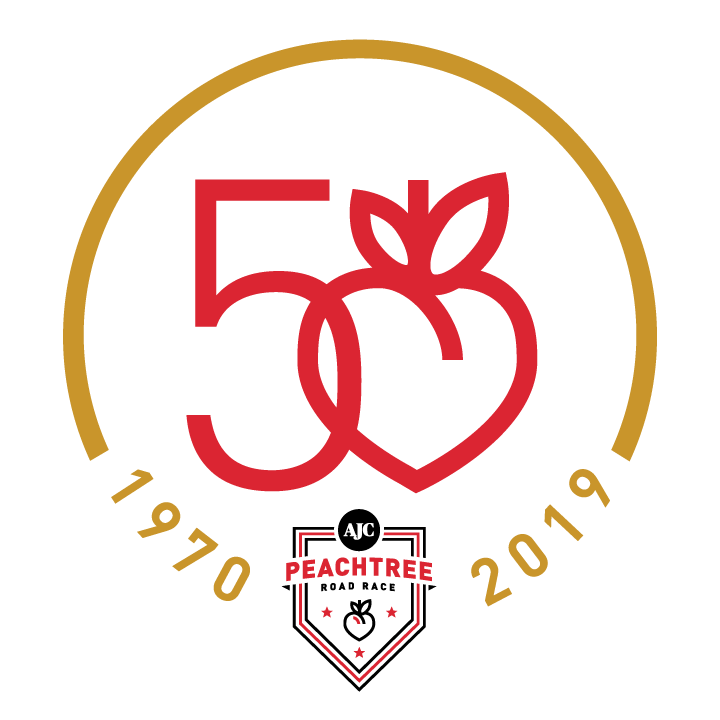Picture Perfect

It is 1978, exactly 40 years ago this July. You’re a professional photographer, stationed a couple hundred feet past the finish line of the AJC Peachtree Road Race. The day is hot; the runners; spent. Mist from fire hoses spraying high into the air showers the ravaged finishers, offering them some small relief. The viewfinder is tiny, but you see an incredible photo taking shape. You turn your Olympus OM 2, with its 35mm F2 lens, to full motor drive. It’s shooting four frames a second, and you run out the roll of your Kodachrome.
When you get the film back from the developer, the image that comes before and the image that comes after are flawed. Truth be told, only one frame out of the 36 you shot is usable.
“I never claimed to be a great photographer, and even at this point I don’t,” said Chuck Rogers, the Atlanta man who captured arguably the most iconic running photo of the era. “But God gave me a great opportunity, and I think I did pretty well with it.”
Courtesy of the Withington Family and Chuck Rogers
After Nike saw the image on the December 1978 issue of “The Runner” magazine, Rogers said, the shoe company bought the rights to print 25,000 posters, anointing the scene as the “Battle of Atlanta.” No more than a month later, he said, they called back for permission to print 25,000 more. In the 1980s, the firm used the image on billboards around the world. It appeared as a wall mural in the 1985 coming-of-age movie “St. Elmo’s Fire.” It was hand-painted onto a brick building in Times Square. It adorned New York City buses.
And it brightened a young man’s brief life.
Standing stock still, his face turned skyward into the Monet-like mist, is 16-year-old Tim Withington of LaGrange. Moments later, he would collapse and be taken to Emory Hospital for treatment of effects from the heat; the temperature at the 7 a.m. race start was 76 degrees. Rumors have long swirled that either he or the runner on the ground behind him died that day, but race organizers at the time reported that only two runners were admitted to hospitals overnight and both soon recovered.
Withington is not named in the photo, but his identity came to light when his father, John, wrote a letter to “The Runner,” thanking the magazine for the “boost it has given his confidence in himself, which in this case is so terribly important now and for his future.”
His son’s life had not been easy. In running, he had found something he could do well; something in which he could achieve.
“Running was his coping skill in high school,” wrote his older sister, Mary, after she was tracked down before the Peachtree this year. Tim was often bullied because of severe learning disabilities and related motor-coordination issues, she said, so the cover photo and poster were huge for his self-esteem.
Courtesy of the Withington Family and Chuck Rogers
Although Tim dropped out of high school, she recounted, he earned his GED and enlisted in the Navy, serving on the USS Constellation. After his discharge, she said, he earned an associate’s degree in welding and construction. He took a job as a welder while studying to take a test to become a state trooper, his real dream. He was sober after a brief struggle with alcohol, and was active in Alcoholics Anonymous. “He had a big laugh and great sense of humor and mischief,” said Mary, with a forgiving heart toward those who had demeaned him. He had a girlfriend, loved to shoot pool, was a big fan of country music.
He also got Mary started in running, once singing “Mony, Mony” to her in encouragement toward the end of a 10K. The last time she saw him, she recalled, they went for a run together and she teased him because he quit after four miles while she carried on.
Courtesy of the Withington Family and Chuck Rogers
That was three decades ago. In 1988, while welding on a job in South Carolina, Tim Withington died after being electrocuted and falling 30 feet to a concrete floor, Mary said. His employer, she added, was found to be at fault.
He was 26.
Mary, 58, and a brother ran the Peachtree this year to commemorate the 40th anniversary of the famous photo. In what felt like an emotional reunion the day before the race, Mary Withington and Chuck Rogers met for the first time when he presented her with a signed print. So now she has a touchingly personal addition: She and all her siblings have framed copies of the poster hanging in their homes. “It’s sort of like keeping his spirit near,” she said. “In the photo you can just feel all the fierce determination and dedication and bravery, and that sums up our brother. He overcame such obstacles, helped by running in a huge way.”
As for Rogers, the photo is the most successful and profitable of a long and notable career. He got his first paying job for the Orlando Sentinel when he was a senior in high school, shot the rookie Mickey Mantle at spring training for a Palm Beach newspaper, did photography for the National Guard after joining in 1949, and later spent 12 years as an official photographer at Cape Canaveral. There, he documented the first U.S. satellite launch and the first day of John Glenn’s return from space. He shot for National Geographic and got one of his photos on the cover of Look magazine.
But the emotional punch of the “Battle of Atlanta” is hard to match. When Tim Withington died, Rogers said, a younger sister contacted him “as if I were a member of the family, to let me know. I appreciated that.”
Copyright 1978 Charles B. (Chuck) Rogers, Jr. Courtesy of the Withington Family and Chuck Rogers









